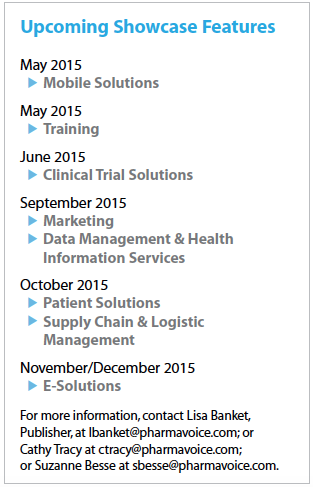According to the authors of the GreenBook Blog, which provides original insight into the challenges faced by the market research industry today, there are several major trends (see related box on this page) that collectively paint a picture of an industry that is facing many challenges, but also has many opportunities.
Data — 90% of which has been created in the last two years — are the new currency for businesses. There are emerging cottage industries and specialties dedicated to collecting and analyzing the vast amounts of data now available. Data are also the currency of market research and the value that these insights bring to companies looking to make smarter decisions across all of their operations. The advantage of big data is that the information can not only provide a big picture perspective about a company’s business. These bytes of information can also provide a better understanding of individual customers.
According to MarketResearch.com, for the past few years, organizations have been investing in big data and working to understand what it all means. Now, companies can use it to benefit their customers’ needs. Creating the best customer experience will create relationships that lead to brand loyalty. Big data will help companies find what makes them most relatable to their customer, and help them differentiate themselves from the competition."
Most experts agree that big data is more than a trend and represents sustainable opportunities for companies that can harness its power.
According to Evolve Research analysts, in some organizations it’s the marketing team that is on the forefront of how technology is impacting  customers, from studying trends in mobile use to understanding the algorithms that power sites like Google. Add the power of big data to that mix and the importance of IT to a marketing professional is evident. Recent predictions are now saying CMOs will be putting more money and effort into IT than CIOs over the next five years, which will force internal alliances.
customers, from studying trends in mobile use to understanding the algorithms that power sites like Google. Add the power of big data to that mix and the importance of IT to a marketing professional is evident. Recent predictions are now saying CMOs will be putting more money and effort into IT than CIOs over the next five years, which will force internal alliances.
These same experts predict that video will continue to grow in importance across industries and platforms. One of the monuments of marketing success in 2014 was the Ice Bucket Challenge, which raised millions for ALS research and at its peak had 2.5 million videos of the act on Facebook.
The success grows not just from a great idea, but from the power of video. Facebook is moving a lot of its chips to video content, making videos auto-play in its News Feed and offering business pages a host of new video-centric metrics. Twitter is not far behind with a native video solution of its own. In the market research world, video is becoming a more powerful tool as well. Some experts predict that in 2015, we will see a notable spike in use of video IDIs, video focus groups, video ethnography, and video diaries. These methods are superior to others in terms of truly discovering and gauging consumer emotions, aspirations, and values. (Editor’s Note: see the October 2015 issue of PharmaVOICE for more on the growing trend of video content. (PV)
~~~~~~~~~~~~~~~~~~~~~~~~~~~~~~~~~
10 Disruptive Macro Trends in Market Research
1. Transition to Insights: Marketing executives are no longer content to receive results from research providers that are little more than data-dumps. They now demand that MR provide insights and that these insights lead to improved business decisions.
2. Commoditization of MR: Many of the traditional methods in MR have been standardized to the point that most suppliers are implementing methods that are largely indistinguishable, and price has emerged as a primary differentiator.
3. Diffusion of MR: In the face of new tools, many research needs are being picked up by the one that has the need — marketing. This is expected to grow as more complicated questions are more simply answered. IT, marketing, operations, and insights are increasingly owning various aspects of the budget, and speed, cost, and quality are what they are looking for.
4. DIY/Home Grown: With companies like Survey Monkey and Qualtrics leading the way, more research methods are being offered in a do-it-yourself package, and enterprise organizations are investing in proprietary data collection and analysis programs that are aligned to their needs.
5. Automation: For years, we have seen the impact of automation in manufacturing as automated tools are used to provide better quality and/or reduced costs. Now MR is following suit. By creating mass efficiencies in the non-human driven processes of MR (sample, field, analysis) via templated, business-issue focused offerings the era of “cheaper, faster, good enough" is firmly in play.
6. Consolidation in MR: Larger research providers are acquiring the needed skills and technologies for them to remain competitive across many sectors of the market, squeezing smaller operators in the process.
7. Equity Investment: As new disruptive tech companies cause competitive price and speed pressure and large players look for acquisition targets to sustain growth, the PE community is funding the development of a new tier of “mashups" and fast growers in the middle market. These mid-market players have less to lose from the disruptive start-ups, thus consolidation may come more from them vs. the Big 4.
8. Digital Dominance: The pervasive influence of the Internet into all aspects of business and consumer life has changed almost every industry, and MR is no exception. Almost all of the recent innovations in research have grown out of technologies enabled by Web-based designs.
9. BI Disintermediation: There has been a flurry of activity from firms that focus on the business intelligence (or BI) space, as they apply their particular skills to challenges in big data that have captured the interest of so many in market research.
10. Big Data/Data Synthesis: Big data, and its associated developments, has been the hue and cry in marketing and MR for the past couple of years, and this trend is showing no signs of decline. With the mountains of data now captured daily by all manner of devices the challenge is connecting it appropriately and then making sense of it all.
Source: Todd Powers, Gregg Archibald, Lenny Murphy, GreenBrook. For more information, visit greenbookblog.org
~~~~~~~~~~~~~~~~~~~~~~~~~~~~~~~~~
 Paul Eccles, Account Director & US Digital Lead, Cello Health
Paul Eccles, Account Director & US Digital Lead, Cello Health
Artificial Intelligence Key to Data Mining
 Dave Bostock, Director of Digital Innovation, Cello Health
Dave Bostock, Director of Digital Innovation, Cello Health
Big Data — Going in the Right Direction
 Kathleen Bonetti
Kathleen Bonetti
VP, Marketing, Rx EDGE Pharmacy Networks
Translating Data Into Action


















